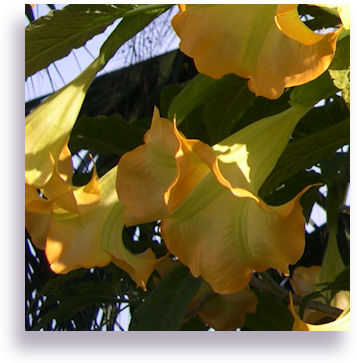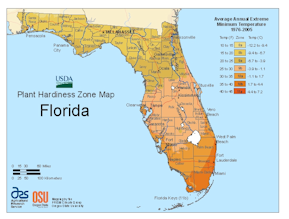Choose The Proper
Planting Site
 Choosing that perfect spot for a veggie garden or flower bed is really more important than most people realize. Picking the wrong place can cause havoc, rendering many, if not all, of your efforts wasted. So read on, brave souls, and I'll share some tips on the right places to dig that garden plot!
Choosing that perfect spot for a veggie garden or flower bed is really more important than most people realize. Picking the wrong place can cause havoc, rendering many, if not all, of your efforts wasted. So read on, brave souls, and I'll share some tips on the right places to dig that garden plot!
Sun! First, if planning a vegetable, fruit orchard, or herb garden, look for a spot that gets full sun almost all day. Without adequate sunlight, you are setting yourself up for doom. Look at the sunlight hitting various potential areas at different times of the day to help you decide the right spot.
Also remind yourself that the sunlight will change it's location on your property during the different seasons. If you are planning only a summer vegetable garden, then just sprng and summer sun will matter to you. But if you are planning an orchard, sunlight even in winter months will make a difference.
If, on the other hand, you need an area with dappled sunlight to start a shade garden bed, pay attention to what kind of trees are overhead. Are they evergreens that constantly shed needles? Only certain plants will do well underneath the cover of pines and cedars. Ferns are one that come to mind.
 If you live in a very hot or arid climate, choose morning sun over afternoon for plants other than cactus or succulents. Morning to early afternoon sun should meet their light requirements, without burning or drying them out too much with strong afternoon sun.
If you live in a very hot or arid climate, choose morning sun over afternoon for plants other than cactus or succulents. Morning to early afternoon sun should meet their light requirements, without burning or drying them out too much with strong afternoon sun.
And for a list of almost the entire world's Frost or Hardiness zone maps, try out this page: Site Index, Climate Hardiness Zones Maps
No∼No's Do not place your garden bed over septic systems, gray water or other drainfields, or near buried cable or electrical lines, or plumbing. Also stay away from old buildings. You may risk lead from the old paint getting into a food crop. If you are up north, stay away from roads that may be salted in winter.
Also stay out of frost pockets. These are usually found in low lying areas of your property, if you have any. It would also be where puddles tend to gather and last longer after a heavy rain.
Do not forget about microclimates. These are small pockets where the surrounding area (perhaps a hundred or just a few square feet) is actually a zone lower than it shows on a Plant frost/freeze hardiness zone chart. If you suspect you may have a microclimate or two, start with the use of a minimum/maximum thermometer. These will record the highest and lowest temperatures of the day. A reset button allows you to record once again.
Tags: choosing proper planting sites, choose proper planting sites, prepare planting sites, choose proper planting sights, microclimate,


